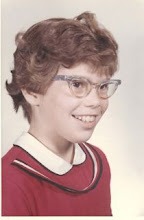
I arrived at the Austin airport last week with nothing to read. This is a major crisis for me. Thank goodness there was a BookPeople mini-store near our gate. It should be no surprise that what caught my attention was a historical novel, Sarah's Key, by Tatiana de Rosnay. The crux of the book focuses on a horrific episode during WWII that I was unaware of -- the July 16 round up of thousands of Jewish families, who were then split up and sent to camps where nearly all were killed. The book alternated back and forth between the past and a contemporary story about an expat American discovering the story. The historical sections are completely compelling -- I felt I was right there with 10-year-old Sarah as she lived through one terror after another. But the contemporary story didn't grab me and I wasn't sure what it added to the overall telling, except perhaps to provide a respite from the awfulness of that July's events.
The manuscript I'd sent to my editor last April attempted to similarly blend an historical event with contemporary times . . .and it didn't work, either. This leaves me wondering if there are successful examples of this kind of story-telling approach out there. I'm blanking on titles -- have you read any that do this well?


What about Kathleen Duey's Resurrection of Magic books: Skin Hunger and Sacred Scars? They're fantasy, but there's Halp's story in the present and Sadima's story in the past. She does a very good job of establishing the time in both stories, and alternating between them. As you progress through the first two books in the trilogy (the third isn't out yet) you begin to see how Sadima's story is the root of Halp's story. Then there's the use of the contemporary story as a frame story, as in Jane Yolen's The Devil's Arithmetic.
ReplyDeleteWhile these particular books are very good, as a rule I'm not sure the technique of moving back and forth from present to past really works. I tend to feel more comfortable staying in one time period, and bringing the other time into it in the form of ghosts, or as a contemporary character learns about the past and that past impacts on the contemporary's character's actions or decisions. But that's just me!
"The Madonnas of Leningrad" is an adult novel that blends the Nazi seige of Leningrad with a contemporary story line. Like you with "Sarah's Key," I was much more into the historical sections, which focused on a woman named Marina who was trying to save the art at the Hermitage Museum from being stolen or destroyed by the Nazis, and also trying to memorize where each picture went so she could remember them after the war.
ReplyDeleteHowever, the contemporary story is also about Marina, only she's elderly and suffers from Alzhimer's, so while she can't remember things that help her in the present, she still remembers where all the paintings in the Hermitage belong. The thematic connections make the two threads more closely related than this other book sounds, plus the use of the same main character. Check it out and let me know if you agree!
Thanks, EM! I had forgotten about the Devil's Arithmetic, and about Kathleen's books. I think it's tricky, though, going back and forth. As a reader, esp. one who adores historical fiction, I almost resent leaving the historical time to return to the present. But that's me!
ReplyDeleteWill do, Emilie -- I haven't read The Madonnas of Leningrad but will add it to the to read pile! I think the idea of sticking with the same character in the past and present sounds like a tighter way to handle the situation.
ReplyDeletePerhaps this is not what you had in mind, as it is non-fiction, but I was blown away by Julie Myerson's "The Lost Child: A Mother's Story." During the course of her historical research about an early 19th century English family, her teenaged son was losing a battle with drugs and she was fighting to save her own family. I found the juxtaposition of the two was very effective!
ReplyDeleteI wish I could think of a MG or YA title, but the best example for me is The Hours, by Michael Cunningham.
ReplyDeleteI think he's really successful in weaving together the stories, although most authors who set out to write this kind of book tend to force together stories that aren't organically connected.
I have to second Emilie's suggestion. "The Madonnas of Leningrad" was both haunting and fascinating, without making me as a reader feel punished by what really happened in history.
ReplyDeleteHoles!
ReplyDelete